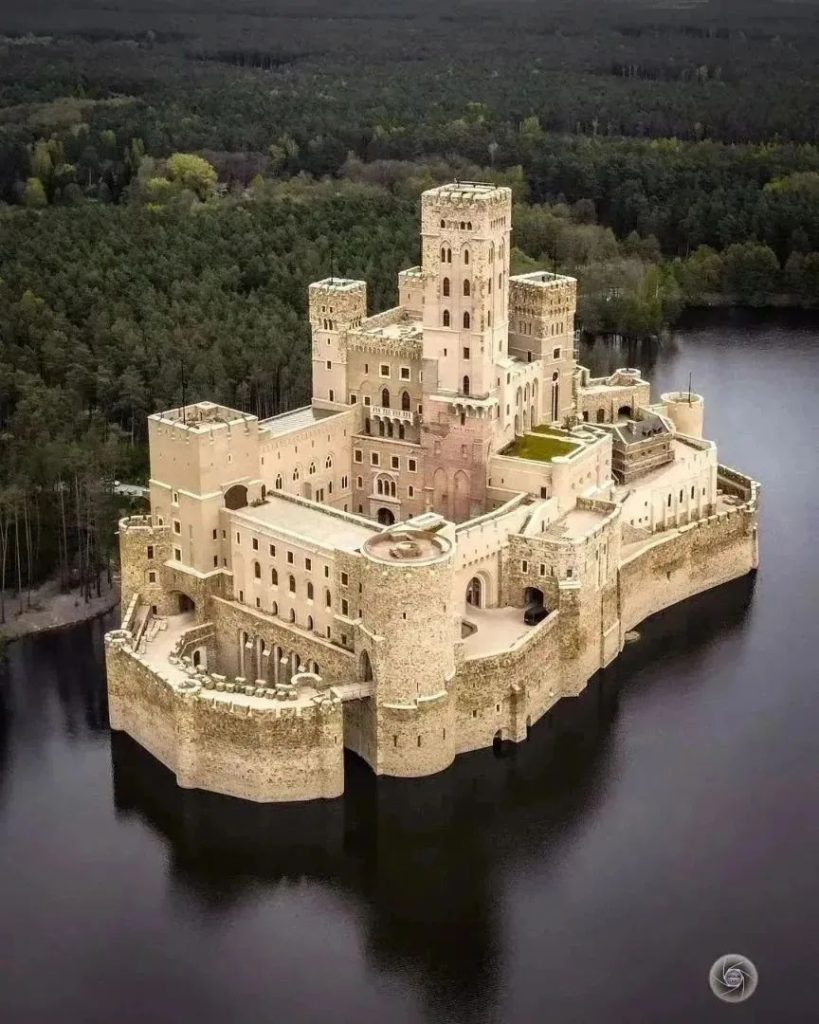Zamek w Stobnicy, a castle wrapped in controversy, is a structure that stands out not just for its architectural design but for its highly debated location. This modern construction, built to resemble a medieval fortress, has sparked heated discussions among environmentalists, local authorities, and the public. While some admire its grandeur, others criticize its presence in a protected natural area. Questions about its accessibility, history, and future remain unanswered, leaving many curious about what lies ahead for this extraordinary site.
The controversy surrounding Zamek w Stobnicy largely stems from its location. Built at the edge of the Noteć Forest, the castle sits within a Natura 2000 protected area, a designation intended to preserve the region’s biodiversity. Environmentalists argue that such a large-scale construction project should never have been approved in such an ecologically sensitive area. Despite this, the project has its supporters, particularly among the residents of Stobnica and the broader Oborniki municipality, who see potential economic and tourism benefits.

While Poland is home to many historic castles, including the 13th-century Zamek Książ and the picturesque Zamek Czocha, Zamek w Stobnicy is a relatively new addition. Construction began in 2015, yet its design mimics the grandeur of medieval strongholds like Malbork Castle. The effort to blend modern construction with an old-world aesthetic has led to mixed reactions, with some praising its authenticity and others questioning the necessity of such a structure in this particular location.
One of the castle’s most striking features is its architectural design. Perched on an artificially created island at the edge of the Noteć Forest, the structure includes 14 above-ground floors, one underground level, and a towering spire that rises several meters into the sky. By early 2022, much of the exterior was clad in sand-colored stone, further reinforcing its medieval appearance. Despite its grandeur, Zamek w Stobnicy remains off-limits to the public. Construction is ongoing, and the site is heavily secured, surrounded by fences topped with barbed wire. Security personnel prevent unauthorized entry, though some daring explorers have attempted to get a closer look—an illegal and highly discouraged endeavor. For now, the only way to view the castle is from a distance.
Whether Zamek w Stobnicy will eventually open to visitors remains uncertain. The project’s investor, the Poznań-based company D.J.T., has not disclosed its final plans for the site. Some speculate that the castle may be transformed into a luxury residential complex or a high-end hotel, given its picturesque location and the region’s potential for tourism. In 2022, reports suggested that the building could feature both private apartments and a hotel section, but no official confirmation has been made. Until a formal announcement is issued, the castle’s long-term purpose—and whether the public will ever have access—remains a mystery.
Stobnica itself is a small village in the Oborniki municipality, located in Poland’s Greater Poland Voivodeship. Those hoping to catch a glimpse of the castle must first travel to Oborniki. From Poznań, the most direct route involves taking Road 92, then Expressway S11, followed by Road 11. Visitors coming from Piła should take Road 11 directly to Oborniki before continuing on the road leading to Wronki, which runs alongside the scenic Warta River.
For now, viewing the castle is a challenge. The site is enclosed by dense forest, making it nearly impossible to see from ground level. The best vantage points offer only partial views, leaving many visitors disappointed by the limited accessibility. Given the significant restrictions, those expecting an up-close experience may find a trip to Stobnica underwhelming.
Zamek w Stobnicy first gained widespread public attention in 2018 when images of the project surfaced, though its origins date back to 2015 when the Oborniki County Governor approved the construction permit. From the beginning, the project was met with skepticism, particularly due to its location within the protected Noteć Forest. Concerns quickly escalated, prompting environmental groups and regulatory agencies to scrutinize the legality of the construction. Critics argued that building such a massive structure within a Natura 2000 site directly contradicted conservation efforts meant to protect the region’s wildlife and natural landscape.
The controversy deepened in 2018 when Poland’s Central Anti-Corruption Bureau launched an investigation into the project. Soon after, the prosecutor’s office became involved, eventually bringing charges against six individuals connected to the development. Among the most serious accusations was that construction had begun despite laws protecting the Natura 2000 area. The legal battle further fueled public debate, with some demanding that the project be halted and the castle demolished.
Despite these legal challenges, Zamek w Stobnicy continued to take shape. The project faced another turning point in late 2020 when then-Governor Łukasz Mikołajczyk refused to revoke the construction permit. This decision ultimately led to his dismissal at the request of Minister Mariusz Kamiński. The move signaled the Polish government’s increasing involvement in the case, leading to speculation that the castle might be forcibly shut down. However, work on the site never ceased, and construction has continued without interruption.
The future of Zamek w Stobnicy remains uncertain. While its medieval design captures the imagination of many, the unresolved legal and environmental concerns cast a shadow over its fate. Will it become a luxury retreat? A historic tourist attraction? Or will legal pressure eventually force its demolition? These questions remain unanswered.
For now, the castle stands as both a marvel and a point of contention—a modern creation with a medieval soul, nestled within one of Poland’s most debated landscapes. Whether it will one day welcome visitors or remain a private and inaccessible fortress is yet to be seen. However, one thing is clear: Zamek w Stobnicy has cemented its place in contemporary discussions on architecture, conservation, and urban planning, ensuring its story will continue to unfold for years to come.





